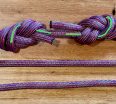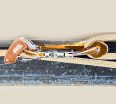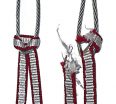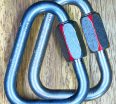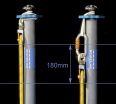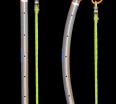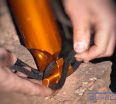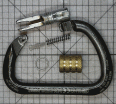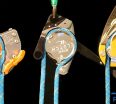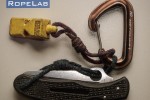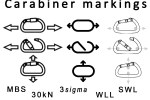So what ropes can I use?
We are seeing so many new devices these days and it can be challenging to decipher exactly what we can and can not use them for. In this article I will focus on two descenders and the information provided with them: the Petzl Rig and the Skylotech Spark.
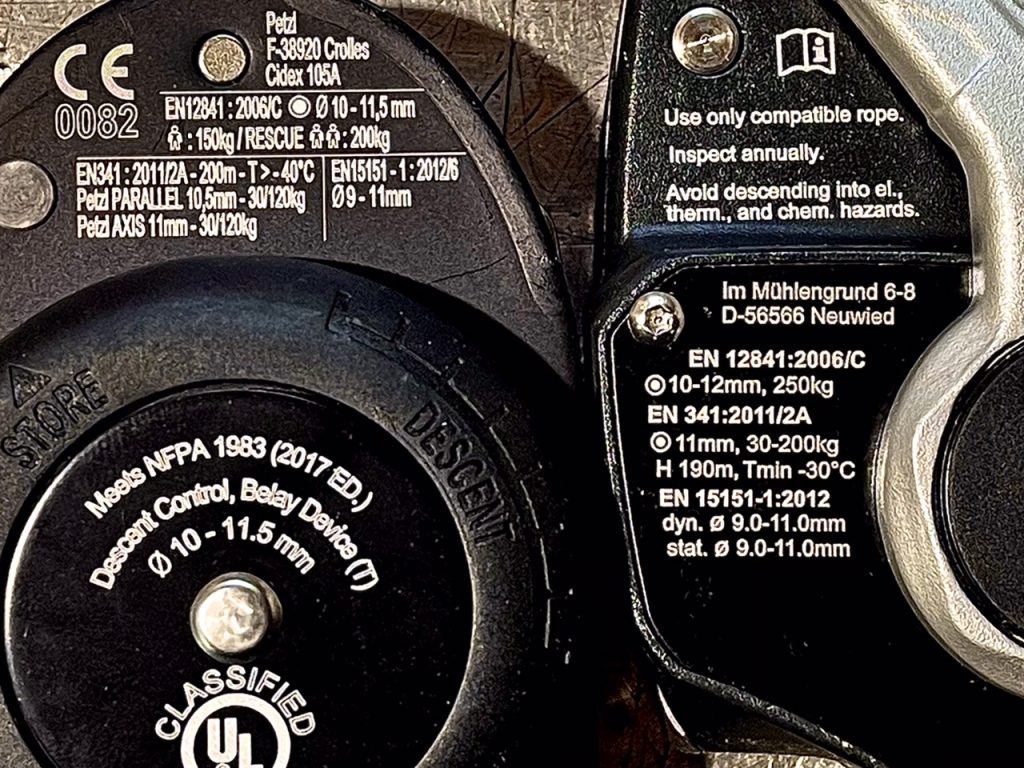
The information on these devices is typical and, while I find it helpful, most see this as confusing.
“So what diameter rope can I use in these devices?”
This question hinges on the word “can”. The answer will depend on the performance you are hoping for.
When I purchased my first Figure-8 descender it came with no instructions. Most ropes then were 11mm, some were 9mm, and anything less was simply “accessory cord”. From experience and observation of others I knew that a single 11mm rope was easy to control, as was the doubled 9mm rope I would use in canyons. As I became more adventurous and venturing into remote locations with heavier packs, I started exploring lighter weight rope options. From trials in a safe and controlled environment, I learned that I could control my descent with doubled 6mm accessory cord used as rope – although with significant constraints and variation in technique.
The key point I am trying to make first up is: You need to try things yourself in controlled environments rather than simply relying on printed instructions and the word of others. Sure, it may say 9mm rope on the device… but which brand and model of rope (they all have different characteristics), what if the rope is wet, what if it is old, what if you are 65kg… or 120kg…. There are so many variables.
So, back to what is etched on these two devices.
They both appear to have vague statements implying you can use ropes in the range of 9mm – 11.5 or 12mm.
The answer is there in the detail however these standards are not freely available and are rarely accessed by end users. Each of the standards listed has different manufacturing, testing, and compatibility requirements.
One key test these standards measures the ability of the device to hold a specified load in a hands-free mode.
In EN12841:2006 this is called the “Minimum Working Strength Test” and, in summary, requires that the device holds a suspended load of 3kN for 3 minutes and slips no more than 300mm during this test.
EN15151-1:2012 calls this the “Blocking Load Test” and only requires 2kN to be held for 1 minute with the same allowance of 300mm maximum slip.
EN12841 – 3kN – 3 minutes – max 300mm slip
EN 15151 – 2kN – 1 minute – max 300mm slip
This should now start making some sense. Since both the load and time of EN15151 are less, the device should be able pass with smaller diameter ropes.
“So can my team use 9mm ropes in these devices?”
You will still need to do your own assessment of function and organisational/jurisdictional requirements however the manufacturers are confirming that these devices both satisfy the requirements of a recognised standard with the 9mm ropes specified in that standard.
Note EN15151 specifies 2kN as the load for this test. This clearly means that we can not be sure either of these devices can support a “rescue load” with 9mm rope in the hands-free position. The scope of EN15151-1:2012 states:
This European Standard applies to braking devices which are loaded with one person and which use mountaineering ropes according to EN892. In the case of abseiling and lowering down, this standard also applies to braking devices, used with low stretch kernmantle ropes according to EN1891.
(c) Richard Delaney, RopeLab 2021



